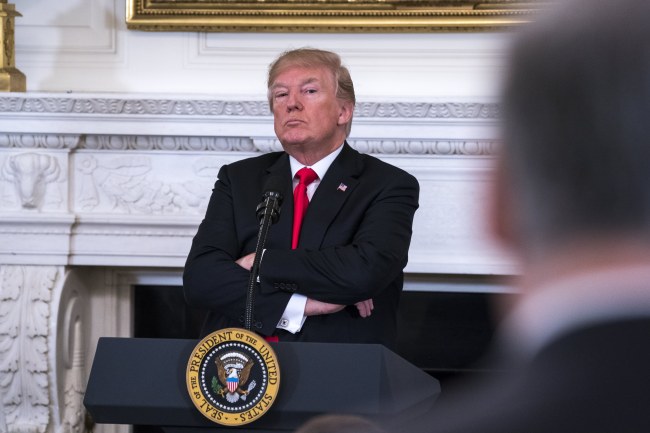A global automaker’s move that could potentially lead to a withdrawal of business here, key rates pressures, and increasing trade pressure from the United States -- these are the three major US-related hurdles weighing upon South Korea’s economy this year.
In the industrial sector, GM Korea’s decision to shut down its Gunsan plant after 22 years of operation is increasingly imposing strain upon the local economy and Seoul’s government.
Macroscopically, Asia’s fourth-largest economy faces the possibility of foreign capital leak following the imminent US key interest rate hike, as well as rising challenges in exports due to the mounting trade pressure from the US administration.
Of them, the most tangible risk of the ongoing brawl over the US carmaker’s plausible withdrawal from the local market, an event likely to devastate the southwestern city and burden policymakers ahead of the June local elections.
GM, which announced its tentative plan to close its underutilized Gunsan factory by May, recorded some 2 trillion won ($1.9 billion) in accumulated losses in 2014-2016.
In return of a $2.7 billion debt-for-equity swap and $2.8 billion in investment over the next 10 years, the company requested financial aid, suggesting that the Korean government’s decision on the matter may decide the fate of the three remaining plants.
 |
GM Korea employees on Tuesday hold a rally in front of the Gunsan City Hall, condemning the company's decision to shut down one of its local factories. (Yonhap) |
The proposal put Seoul in a fix as the injection of public funds into the US carmaker -- considered indispensable to relieve the 2,000 employees and some 3,000 subcontractors from immediate fallout -- may turn out futile, should the company eventually pull out of the market entirely.
Another disincentive for the financial aid scenario is the prevailing suspicion that GM’s head office has been pocketing huge profits by underestimating its Korean office’s sales performance.
“GM (Global) should be held responsible for profiteering at the sacrifice of GM Korea,“ Rep. Ji Sang-wuk of the conservative minority Bareun Future Party said Tuesday.
The company recorded $12.8 billion in earnings before interest and tax last year and was preparing to pay out $11,750 in bonuses to employees, according to the lawmaker.
While industries and financial officials grappled over the GM dilemma, Seoul’s central bank faced challenges concerning its policy rates.
The Bank of Korea on Tuesday froze the benchmark key interest rate at 1.5 percent for two consecutive months, maintaining a wait-and-see stance amid a slow growth momentum.
“The price increase pressure is likely to remain steady for a while, so we decided to free the key rate at its current level,” BOK Gov. Lee Ju-yeol told reporters.
The rate freeze is expected to weigh down upon Seoul’s financial markets as the US Federal Reserve is widely expected to raise its key rate in March, consequently reversing the two countries’ interest rate gap for the first time in 10 years.
This key rate situation led to dim speculations that global capital may slip out of developing economies and flock to the higher-rate markets in the US, as previously shown in the wake of the Fed‘s rate hiking move back in 2013 -- the so-called Taper Tantrum.
“Cases of foreign capital outflow have mostly occurred in exceptional occasions,” the BOK chief added, in an effort to dismiss such concerns.
“The interest rate gap alone is insufficient to trigger a mass capital leak from a nation’s economy.”
A key factor which led Seoul‘s central bank to lean towards the status quo despite risks is the snowballing amount of the nation’s household debts, which totaled at a record 1.45 quadrillion won as of the end of last year.
Adding further to the Korean economy, especially its steel exports, is the mounting trade protectionist gestures from the US administration.
US President Donald Trump on Monday said that he would increase tariffs up to 24 percent for all steel imports if necessary to revive the US domestic industry.
“I want to bring the steel industry back into our country,” Trump said at a meeting with state governors at the White House. “If that takes tariffs, let them take tariffs. Maybe it‘ll cost a little bit more, but we’ll have jobs. Let it take tariffs.”
 |
US President Donald Trump on Monday attends a meeting with state governors at the White House. (Yonhap) |
The US president’s remarks followed the Commerce Department‘s earlier recommendation that steel imports posed a threat to national security and thus qualified for special measures such as higher tariffs.
Though Trump’s plan steered clear of the most severe scenario -- of levying a maximum tariff of 53 percent on 12 designated countries including South Korea -- it nevertheless is expected to place an unprecedented burden upon steelmakers here.
As part of President Trump‘s trade protectionist stance, Washington earlier slapped extra tariffs on washing machines and solar cell panels imported from South Korean and other manufacturers.
By Bae Hyun-jung (
tellme@heraldcorp.com)









![[Weekender] Korea's traditional sauce culture gains global recognition](http://res.heraldm.com/phpwas/restmb_idxmake.php?idx=644&simg=/content/image/2024/11/21/20241121050153_0.jpg)